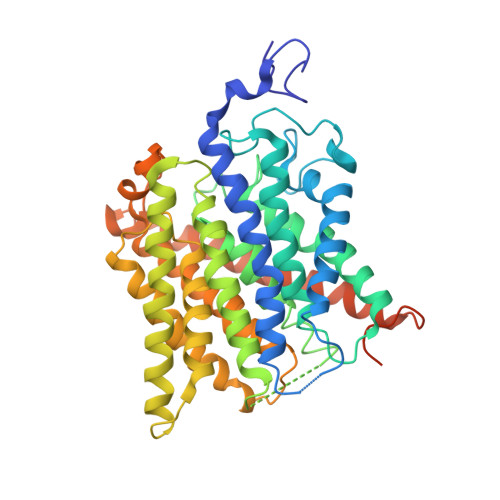Structural Basis for Mep2 Ammonium Transceptor Activation by Phosphorylation.
Van Den Berg, B., Chembath, A., Jefferies, D., Basle, A., Khalid, S., Rutherford, J.(2016) Nat Commun 7: 11337
- PubMed: 27088325
- DOI: https://doi.org/10.1038/ncomms11337
- Primary Citation of Related Structures:
5AEX, 5AEZ, 5AF1, 5AH3, 5AID, 5FUF - PubMed Abstract:
Mep2 proteins are fungal transceptors that play an important role as ammonium sensors in fungal development. Mep2 activity is tightly regulated by phosphorylation, but how this is achieved at the molecular level is not clear. Here we report X-ray crystal structures of the Mep2 orthologues from Saccharomyces cerevisiae and Candida albicans and show that under nitrogen-sufficient conditions the transporters are not phosphorylated and present in closed, inactive conformations. Relative to the open bacterial ammonium transporters, non-phosphorylated Mep2 exhibits shifts in cytoplasmic loops and the C-terminal region (CTR) to occlude the cytoplasmic exit of the channel and to interact with His2 of the twin-His motif. The phosphorylation site in the CTR is solvent accessible and located in a negatively charged pocket ∼30 Å away from the channel exit. The crystal structure of phosphorylation-mimicking Mep2 variants from C. albicans show large conformational changes in a conserved and functionally important region of the CTR. The results allow us to propose a model for regulation of eukaryotic ammonium transport by phosphorylation.
- Institute for Cell and Molecular Biosciences, The Medical School, Newcastle University, Newcastle upon Tyne NE2 4HH, UK.
Organizational Affiliation:
















